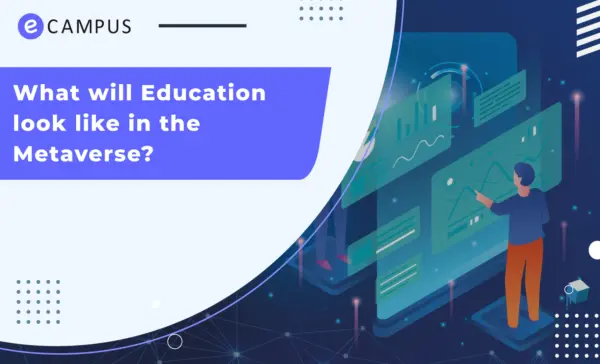What will Education look like in the Metaverse?
The Metaverse, it’s not the plot of the latest comic book, no. But yes, it’s the topic Mark Zuckerberg was probably talking about. But what exactly is it?
Imagine a history teacher giving a lecture to a group of students about the Harappa Civilization, the first known urban culture on the Indian subcontinent. Instead of reading the chapter from a book, the teacher takes the class to Harappa in Punjab by projecting a chronological sequence of events in front of the students, where they can explore the sites, ask questions, and learn.
This is what education will look like in the Metaverse. It can be customized by users and developers who can create anything from a Metaverse school to virtual sports stadiums.
Ways the Metaverse Can Positively Influence Education
1. Learn and interact in a realistic virtual campus:
Even before and during COVID-19, learning had begun to shift from traditional classrooms to blended and virtual environments. Cost-effective virtual learning was made possible through the eCampus LMS. Using virtual reality headsets, students can visit a virtual campus or university to learn, explore, and interact. This is referred to as “immersive campus life.” Learners can interact with peers, visit libraries and break rooms, meet faculty and advisors, and participate in various learning groups using this digital environment.
2. Enhance real-world capabilities in hybrid and virtual environments:
The Metaverse provides the opportunity to gain experience and develop skills through real-world events and high-pressure environments where mistakes can be made without consequence. When done right, it combines VR with data science, spatial design, and other elements to increase learner engagement, confidence, and application. Below are some of the benefits of Metaverse training:
Experiential learning
Deliberate practice
State-dependent learning
Read More: Is the Metaverse Transforming future eLearning?
3. Explore different worlds through visualization and storytelling :
After the abundance of boring zoom encounters during COVID-19, the two defining characteristics of a metaverse learning experience – visualization and storytelling – are now much needed. VR technology allows learners to enter a completely different environment or put themselves in another person’s shoes. Entering meta-worlds makes it easier to visualize scenarios, such as difficult development problems. For example, with a VR headset, a learner can live in a green smart city or analyse the development of a South Asian street.
4. Improving accessibility for people with disabilities:
The Metaverse has the potential to improve the social and educational participation of people with disabilities. For example, young adults with special needs, autism, and social interaction difficulties can develop their social and vocational skills in an immersive environment by participating in activities such as shopping at a mall or grocery store or loading a truck. With the help of VR apps, individuals can improve their skills and socialize in a safe environment without feeling overwhelmed or anxious.
VR can also help people who struggle with mobility or anxiety live better, more fulfilling lives.
5. Increased collection of data on learning performance
Organisations can collect previously untapped data to gain insights into learner behaviour, measure progress, discover gaps, and continuously improve the learning experience by leveraging the Metaverse to create immersive learning experiences. Usage, performance, attention and engagement, mood, and predictive analytics are all relevant data on learner behaviour. In addition, teachers can take a more active role in data collection and instructional analysis for the effectiveness of these learning environments. This is just the beginning; there are countless opportunities to reinvent and democratise education in new ways thanks to this technology.
Conclusion : The future of the metaverse in education
Since Facebook was renamed Meta, the term “Metaverse” has attracted a considerable amount of attention. Leading companies and brands have already begun investing in a number of metaverse projects. Although the idea of metaverse is gaining traction in academia, its potential in education has yet to be fully realised. Hope for the future is provided by Meta, the investments being made by Meta Immersive Learning to help students access learning through technology, and numerous companies and prestigious universities that are exploring the potential of metaverse education. Studying in the metaverse has some shortcomings. Among them is how to include students with disabilities such as hearing or vision impairments. Experts also say metaverse addiction is a real possibility for children and adults. And for Metaverse education to catch on and succeed, it must become easier for families to purchase virtual reality headsets. However, with its myriad benefits, the metaverse will certainly transform education, accelerate learning, and reshape the current system into a more modern, innovative, and relevant one.



Leave a Reply